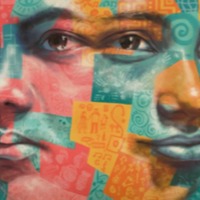
Shola
There is an estimated 48,000 people living in modern slavery in Libya (GSI 2018). Libya is a major transit destination for migrants and refugees hoping to reach Europe by sea. Human trafficking networks have prospered amid lawlessness, created by the warring militias that have been fighting for control of territories since the toppling of Muammar Gaddafi in 2011. Highly organized trafficking and migrants smuggling networks that reach into Libya from Niger, Nigeria, Chad, Eritrea, Ethiopia, Somalia, Sudan, and other sub-Saharan states subject migrants to forced labor and forced prostitution through fraudulent recruitment, confiscation of identity and travel documents, withholding or non-payment of wages, debt bondage, and verbal, physical, and sexual abuse. In some cases, migrants reportedly pay smuggling fees to reach Tripoli, but once they cross the Libyan border they are sometimes abandoned in southern cities or the desert where they are susceptible to severe forms of abuse and human trafficking. Shola was unhappy with her life in Nigeria. She wanted to study and get a job, but when she finished secondary school, her family expected her to marry, have children, and be a housewife. She decided to go to Europe to realize her plans. A woman promised to take her there, and she departed with a group of girls, taking the Libya route. Once in Libya, Shola and the other girls were told they would have to work before they crossed. They were forced into prostitution and were beaten if they refused. Shola and some others escaped from their sexual exploitation with the help of a man, but while living with him they were put to work in other people’s homes.
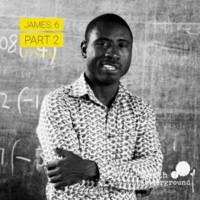
James
There are an estimated 133,000 people living in modern slavery in Ghana (GSI 2018). Ghana remains a source, transit, and destination country for men, women, and children subjected to forced labour and sex trafficking. Ghanaian boys and girls are subjected to forced labour within the country in fishing, domestic service, street hawking, begging, portering, artisanal gold mining, quarrying, herding, and agriculture, including cocoa. Research focused on the fishing industry on Lake Volta indicated that more than half of the children working on and around the lake were born in other communities and many of these children are subjected to forced labour; not allowed to attend school; given inadequate housing and clothing; and are controlled by fishermen through intimidation, violence, and limiting access to food. Boys as young as five years old are forced to work in hazardous conditions, including deep diving, and many suffer waterborne infections. A study of the prevalence of child trafficking in selected communities in the Volta and Central Regions indicated that children from nearly one-third of the 1,621 households surveyed had been subjected to trafficking, primarily in fishing and domestic servitude. James was forced into child labour by his father, in Winneba, Ghana. From the age of six to thirteen he was forced to work long hours as a child fisherman with little food and no access to medical care.
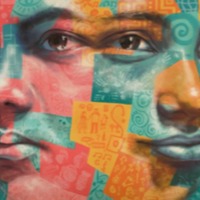
Natalicia
There are an estimated 403,000 people living in conditions of modern slavery in the United States (GSI 2018). The US attracts migrants and refugees who are particularly at risk of vulnerability to human trafficking. Trafficking victims often responding to fraudulent offers of employment in the US migrate willingly and are subsequently subjected to conditions of involuntary servitude in industries such as forced labour and commercial sexual exploitation. Natalicia was trafficked from Brazil into domestic servitude in the Boston, United States at the age of fourteen. She was working as a nanny when her employers invited her to travel to the US with them to take care of their toddler. Natalicia was granted a two-year visa to work as a domestic worker for the family. However, upon arriving in the US, she was forced to work long hours for no pay, to do housework as well as undertake childcare, and forced to sleep on the porch.
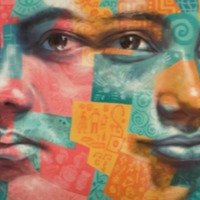
Agnes
The Global Slavery Index 2018 estimates that there are approximately 129,000 people living in conditions of modern slavery in France. France is a destination, transit and, to a lesser extent, source country for the exploitation of men, women and children in forced labour and sex trafficking. Labour traffickers exploit women and children in domestic servitude. Families often exploit relatives brought from Africa to work in their households. Domestic servitude makes up approximately eight percent of all trafficking in France. Agnes was trafficked into domestic servitude from Ivory Coast to France at the age of 18. She arrived as an orphan to study but was forced to work long hours without pay or a contract.
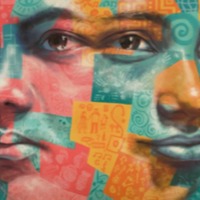
Erasyl
There are an estimated 794,000 people living in conditions of modern slavery in Russia (GSI 2018). Forced labour remains the predominant form of human trafficking in the country. Labour trafficking has been reported in the construction, manufacturing, logging, textile, and maritime industries, as well as in sawmills, agriculture, sheep farms, grocery and retail shops, restaurants, waste sorting, street sweeping, domestic service, and forced begging. Many migrant workers experience exploitative labour conditions characteristic of trafficking cases, such as withholding of identity documents, non-payment for services rendered, physical abuse, lack of safety measures, or extremely poor living conditions. Erasyl*, a 46-year-old man from Kazakhstan travelled to Russia to get money for his son’s education. He paid a recruiter to find him work. Upon arrival Erasyl had his passport confiscated and he was forced to work as a bricklayer to pay off the debt incurred from the recruiter.
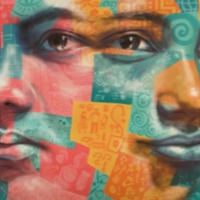
Rakesh
There are an estimated 171,000 people living in modern slavery in Nepal (GSI 2018). Within Nepal, bonded labour exists in agriculture, brick kilns, the stone-breaking industry, and domestic work. Sex trafficking of Nepali women and girls increasingly takes place in private apartments, rented rooms, guest houses, and restaurants. Nepali and Indian children are subjected to forced labor in the country, especially in domestic work, brick kilns, and the embroidered textile, or zari, industry. Under false promises of education and work opportunities, Nepali parents give their children to brokers who instead take them to frequently unregistered children’s homes in urban locations, where they are forced to pretend to be orphans to garner donations from tourists and volunteers; some of the children are also forced to beg on the street. Rakesh’s sister told him she would help him continue his education in Kathmandu. However, upon arrival she took him to a carpet factory where he was physically abused and had his food withheld. He was found by GoodWeave who took him to a transit home and gave him education opportunities.
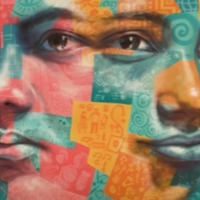
Hem Moktan
There are an estimated 171,000 people living in modern slavery in Nepal (GSI 2018). Within Nepal, bonded labour exists in agriculture, brick kilns, the stone-breaking industry, and domestic work. Sex trafficking of Nepali women and girls increasingly takes place in private apartments, rented rooms, guest houses, and restaurants. Nepali and Indian children are subjected to forced labor in the country, especially in domestic work, brick kilns, and the embroidered textile, or zari, industry. Under false promises of education and work opportunities, Nepali parents give their children to brokers who instead take them to frequently unregistered children’s homes in urban locations, where they are forced to pretend to be orphans to garner donations from tourists and volunteers; some of the children are also forced to beg on the street. Hem was brought to a carpet factory in Kathmandu where his parents hoped he would work towards a better future. He was forced to work day and night, often half-starved and regularly beaten. Because he was small and a somewhat slow weaver, the others tormented him. Night and day, with long iron rods and balling equipment, the weavers would beat him to the point of tears and bruises. After a company in the West signed with GoodWeave, inspectors found Hem working in a carpet factory in Kathmandu and enrolled him in the transit home for rescued children. Fourteen years after he was rescued and rehabilitated by GoodWeave, Hem responded to a job posting to join GoodWeave’s inspection team. He was hired and later on promoted to be the Child Development Officer to work one-on-one with rescued children.
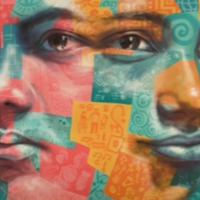
Revathi
There are an estimated almost 8 million people living in modern slavery in India (GSI 2018). India has a population of more than 1.3 billion people, there are still at least 270 million people living on less than US$1.90 per day. While laws, systems and attitudes regarding key 'fault lines' such as the caste system, gender and feudalism are rapidly changing, social change of this depth and scale necessarily takes time. In this context, it is perhaps unsurprising that existing research suggests that all forms of modern slavery continue to exist in India, including forced labour. Young women and girls, often from lower castes, are exploited in Indian spinning mills. They are contracted for three or more years to work in the textile factories of southern India and do not receive minimum wage. At the end of the contract, workers receive a premium, but that is often not the amount promised. This form of exploitation was called Sumangali (Happy Bride), because the premium was supposed to serve as the bride price. While the spinning mills no longer advertise this kind of work under this slogan, the practice continues. Revathy went to work at a spinning mill after his parents could no longer afford her education. She was hired by an agent who offered food, accommodation and salary for an eight-hour working day. However, upon arrival, Revathy was forced to work long hours in unsafe conditions and had her pay deducted for the food and accommodation she was promised. She recounts the working conditions and illnesses workers developed in the mill.

Sangeetha
It is estimated that almost 8 million people are living in conditions of modern slavery in India (GSI 2018). The skewed sex ratio in some regions of India has fuelled the trafficking and selling of women and young girls as brides within India. Women are reportedly sold off into marriage by their families, sometimes at a young age, and end up enduring severe abuse, rape and exploitation by their husbands. It is also reported that women and girls from impoverished backgrounds have been lured by promises of marriage by younger men from urban areas, then forced into sex work once married. Sangeetha was sixteen years old when a relative proposed her married to a twenty-nine-year-old man. Despite seeking help from an organisation and wanting to remain in education, Sangeetha was married in a hurry.
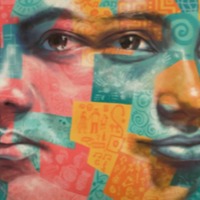
Salmoni
Bonded labour, also known as debt bondage or debt slavery, is the most common form of modern slavery. Debt bondage occurs when a person is forced to work to pay off a debt, often taken to pay for health emergencies because of lack of universal health coverage. People are forced to work for little or no pay, with no control over their debt. The money they earn goes to pay off their loan and the value of their work invariably becomes greater than the original sum borrowed. Bonded labour is most widespread in South Asian countries such as India and Pakistan. Often entire families have to work to pay off the debt taken by one of its members. Sometimes, the debt can be passed down the generations and children can be held in debt bondage because of a loan their parents had taken decades ago. In South Asia it still flourishes in agriculture, brick kilns, mills, mines and factories. Salmoni was forced to leave school and work on a brickyard after her father became ill and could no longer afford to pay rent. She worked long hours and was underpaid. When she and her parents agreed that she should no longer work and go back to school, her mother was diagnosed with breast cancer. Salmoni’s father borrowed the money for her surgery from the brickyard owner and the family became trapped in bonded labour.
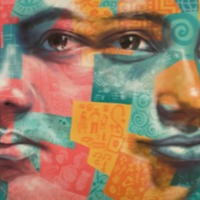
Nasreen Sheikh
There are an estimated almost 8 million people living in modern slavery in India (GSI 2018). India has a population of more than 1.3 billion people, there are still at least 270 million people living on less than US$1.90 per day. While laws, systems and attitudes regarding key 'fault lines' such as the caste system, gender and feudalism are rapidly changing, social change of this depth and scale necessarily takes time. In this context, it is perhaps unsurprising that existing research suggests that all forms of modern slavery continue to exist in India, including intergenerational bonded labour, forced child labour, commercial sexual exploitation, forced begging, forced recruitment into nonstate armed groups and forced marriage. Nasreen was born up into what she recognised as an oppressive society after witnessing the murder of her aunt and forced marriage of her older sister. To get out of her village, Nasreen travelled to Kathmandu to live with her cousin when she was nine years old. Here she experienced forced child labour and was forced to work twelve-hour days with little pay and poor living conditions. After two years the work ended, and she was left homeless. She received help from a stranger and began a distance education course. She recalls how this education brought her to understand the issues affecting Kathmandu society and sought out ways to address these. At fifteen years old she started Local Women’s Handicrafts to empower women and girls recovering from trauma and living in poverty.
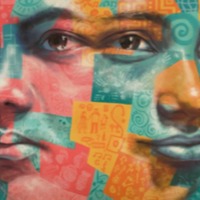
Y
There are an estimated 136,000 people living on conditions of modern slavery in the United Kingdom (Global Slavery Index 2018). According to the 2017 annual figures provided by the National Crime Agency, 5, 145 potential victims of modern slavery were referred through the National Referral Mechanism in 2017, of whom 2,454 were female, 2688 were male and 3 were transgender, with 41% of all referrals being children at the time of exploitation. People are subjected to slavery in the UK in the form of domestic servitude, labour exploitation, organ harvesting and sexual exploitation, with the largest number of potential victims originating from Albania, China, Vietnam and Nigeria. This data however does not consider the unknown numbers of victims that are not reported. Y was trafficked from Nigeria to the United Kingdom at five years old. She was forced to clean, prevented from leaving the house or going to school and made to look after the family’s baby. Y was physically, emotionally and mentally abused by the family that had bought her. When she was 11, the family moved back to Nigeria and sold Y to their friend. She remained in the UK and was forced to work long hours doing housework. When she was 14, she was also forced to make cakes for the woman to sell and make money. She finally ran away and went to live with a foster family while the police and social services worked on her case.
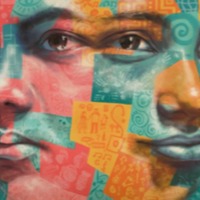
Matthew Dixon
There are an estimated 133,000 people living in modern slavery in Ghana (GSI 2018). Ghana remains a source, transit, and destination country for men, women, and children subjected to forced labour and sex trafficking. Ghanaian boys and girls are subjected to forced labor within the country in fishing, domestic service, street hawking, begging, portering, artisanal gold mining, quarrying, herding, and agriculture, including cocoa. Research focused on the fishing industry on Lake Volta indicated that more than half of the children working on and around the lake were born in other communities and many of these children are subjected to forced labor; not allowed to attend school; given inadequate housing and clothing; and are controlled by fishermen through intimidation, violence, and limiting access to food. Boys as young as five years old are forced to work in hazardous conditions, including deep diving, and many suffer waterborne infections. A study of the prevalence of child trafficking in selected communities in the Volta and Central Regions indicated that children from nearly one-third of the 1,621 households surveyed had been subjected to trafficking, primarily in fishing and domestic servitude. Matthew was trafficked into fishing on Lake Volta, Ghana after he left school to help support his family. The trafficker promised his mother monthly payment in exchange for Matthew’s labour. He was forced to work long hours in dangerous conditions under the threat of violence. After attending workshops on child trafficking Matthew’s mother realised what she had done and organised his release. Matthew is now back at school.
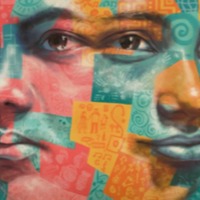
Monica
There are an estimated 403,000 people living in modern slavery in the United States (GSI 2018). Sex trafficking exists throughout the country. Traffickers use violence, threats, lies, debt bondage and other forms of coercion to compel adults and children to engage in commercial sex acts against their will. The situations that sex trafficking victims face vary, many victims become romantically involved with someone who then forces them into prostitution. Others are lured with false promises of a job, and some are forced to sell sex by members of their own families. Victims of sex trafficking include both foreign nationals and US citizens, with women making up the majority of those trafficked for the purposes of commercial sexual exploitation. In 2015, the most reported venues/industries for sex trafficking included commercial-front brothels, hotel/motel-based trafficking, online advertisements with unknown locations, residential brothels, and street-based sex trafficking. Monica was trafficked for commercial sexual exploitation in the state of Nebraska. She talks about the importance of removing stigma and having conversations to raise awareness about what can lead to human trafficking. In terms of supporting those who have been trafficked, Monica puts emphasis on access to health care, social services, juvenile justice, the education system and transportation
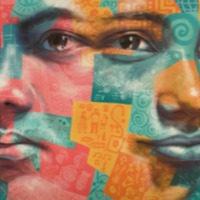
Alice
There are an estimated 403,000 people living in modern slavery in the United States (GSI 2018). Sex trafficking exists throughout the country. Traffickers use violence, threats, lies, debt bondage and other forms of coercion to compel adults and children to engage in commercial sex acts against their will. The situations that sex trafficking victims face vary, many victims become romantically involved with someone who then forces them into prostitution. Others are lured with false promises of a job, and some are forced to sell sex by members of their own families. Victims of sex trafficking include both foreign nationals and US citizens, with women making up the majority of those trafficked for the purposes of commercial sexual exploitation. In 2015, the most reported venues/industries for sex trafficking included commercial-front brothels, hotel/motel-based trafficking, online advertisements with unknown locations, residential brothels, and street-based sex trafficking. Alice was trafficked into commercial sexual exploitation in 1999 in Nebraska. She talks about the importance of education for the prevention of trafficking and teaching police and medical staff how to treat people who have been trafficked. Alice also stresses the importance of safe houses, ensuring women who have been trafficked have a safe place to go and available support.
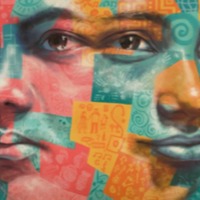
Becky
There are an estimated 403,000 people living in modern slavery in the United States (GSI 2018). Sex trafficking exists throughout the country. Traffickers use violence, threats, lies, debt bondage and other forms of coercion to compel adults and children to engage in commercial sex acts against their will. The situations that sex trafficking victims face vary, many victims become romantically involved with someone who then forces them into prostitution. Others are lured with false promises of a job, and some are forced to sell sex by members of their own families. Victims of sex trafficking include both foreign nationals and US citizens, with women making up the majority of those trafficked for the purposes of commercial sexual exploitation. In 2015, the most reported venues/industries for sex trafficking included commercial-front brothels, hotel/motel-based trafficking, online advertisements with unknown locations, residential brothels, and street-based sex trafficking. Becky was trafficked into prostitution in the state of Nebraska. She talks about her trafficking experience and stresses the importance of differentiating between those who have been trafficked and those who choose prostitution. In her own experience, failing to acknowledge this has meant that even after escape, women are still fighting to prove their point and what happened to them. Becky suggests that education in schools and among the police is important for the prevention of trafficking and in the treatment, women receive after escape.
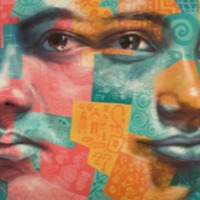
Nancy
There are an estimated 403,000 people living in modern slavery in the United States (GSI 2018). Sex trafficking exists throughout the country. Traffickers use violence, threats, lies, debt bondage and other forms of coercion to compel adults and children to engage in commercial sex acts against their will. The situations that sex trafficking victims face vary, many victims become romantically involved with someone who then forces them into prostitution. Others are lured with false promises of a job, and some are forced to sell sex by members of their own families. Victims of sex trafficking include both foreign nationals and US citizens, with women making up the majority of those trafficked for the purposes of commercial sexual exploitation. In 2015, the most reported venues/industries for sex trafficking included commercial-front brothels, hotel/motel-based trafficking, online advertisements with unknown locations, residential brothels, and street-based sex trafficking. Nancy was trafficked into prostitution, subjected to sexual abuse and violence daily. Nancy stresses the importance of education and raising awareness for both the prevention of commercial sexual exploitation and understanding how to support survivors. She highlights the need for survivors be supported by police rather than interrogated for information and have access to wider networks of support.
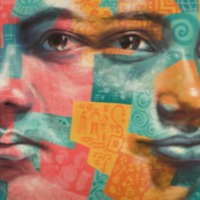
Susan A
There are an estimated 403,000 people living in modern slavery in the United States (GSI 2018). Sex trafficking exists throughout the country. Traffickers use violence, threats, lies, debt bondage and other forms of coercion to compel adults and children to engage in commercial sex acts against their will. The situations that sex trafficking victims face vary, many victims become romantically involved with someone who then forces them into prostitution. Others are lured with false promises of a job, and some are forced to sell sex by members of their own families. Victims of sex trafficking include both foreign nationals and US citizens, with women making up the majority of those trafficked for the purposes of commercial sexual exploitation. In 2015, the most reported venues/industries for sex trafficking included commercial-front brothels, hotel/motel-based trafficking, online advertisements with unknown locations, residential brothels, and street-based sex trafficking. Susan was 16 years old when she was forced into prostitution by her boyfriend whom she thought she would be with forever. She talks here about the need for greater education on commercial sexual exploitation in schools and in the prison system to prevent trafficking of young girls. She also talks about ways to support women after their trafficking experience, highlighting the need for employment, housing and counselling.
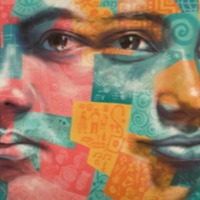
Mabel B
There are an estimated 403,000 people living in modern slavery in the United States (GSI 2018). Sex trafficking exists throughout the country. Traffickers use violence, threats, lies, debt bondage and other forms of coercion to compel adults and children to engage in commercial sex acts against their will. The situations that sex trafficking victims face vary, many victims become romantically involved with someone who then forces them into prostitution. Others are lured with false promises of a job, and some are forced to sell sex by members of their own families. Victims of sex trafficking include both foreign nationals and US citizens, with women making up the majority of those trafficked for the purposes of commercial sexual exploitation. In 2015, the most reported venues/industries for sex trafficking included commercial-front brothels, hotel/motel-based trafficking, online advertisements with unknown locations, residential brothels, and street-based sex trafficking. Mabel was trafficked into forced prostitution in the state of Nebraska. She draws on her experience to highlight the necessity of education and early intervention in the prevention of trafficking. Mabel underlines the importance of going beyond rescue, calling for allying and partnering with survivors to support them in their lives after trafficking.
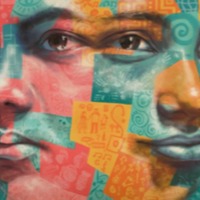
Kumari
There are an estimated almost 8 million people living in modern slavery in India (GSI 2018). India has a population of more than 1.3 billion people, there are still at least 270 million people living on less than US$1.90 per day. While laws, systems and attitudes regarding key 'fault lines' such as the caste system, gender and feudalism are rapidly changing, social change of this depth and scale necessarily takes time. In this context, it is perhaps unsurprising that existing research suggests that all forms of modern slavery continue to exist in India, including intergenerational bonded labour, forced child labour, commercial sexual exploitation, forced begging, forced recruitment into nonstate armed groups and forced marriage. Kumari was taken by a family who promised to provide her with an education. However instead she was forced to do all the housework, working long hours with restricted food. After a while she became too ill to work and was finally sent home.